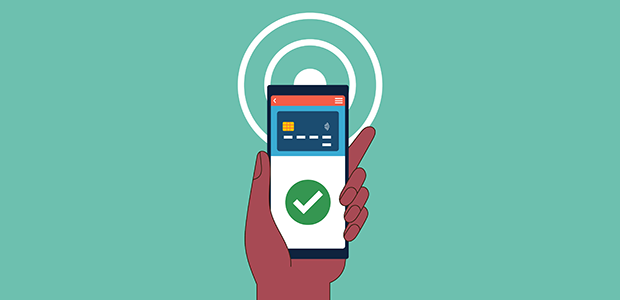
Tapping into trust: Burbank founder Justin Pike talks about the next evolution of online payments
With a background in building and selling major payments businesses, Justin Pike is no stranger to transforming how money moves. Now, as CEO and Founder of Burbank, he’s leading a new venture from Wales that aims to bring familiar, in-store card-present security to the online checkout process. It’s called Card Present over Internet, and it could just change the balance of power in digital commerce – reducing fraud, restoring trust, and even lowering costs for merchants.

In a Q&A with Associate Editor, Sheryl Miles, Pike talks about the origins of the company, its technology, and what comes next.
What was the original problem you set out to solve with Burbank, and why do you believe now is the right time for a change in how we pay online?
It all started with my mother-in-law. During Covid, every Monday morning I’d have to call her to help her pay for the things in her online basket because she just didn’t trust the Internet. She’d always ask, “Why can’t I just tap my card on my phone like I do in shops?” That was the moment I realised the problem wasn’t just about fraud or tech, it was about trust. Because for many people, the way we pay online doesn’t feel familiar or secure.
I have spent my entire career in payments and had built and exited multiple payments businesses. I had led teams that developed the original tech behind the PCI standards that turned mobile phones into secure payment devices. So I knew that it was possible (albeit incredibly difficult) to build an online payments process that was secure enough to meet the highest standards, but simple enough to work for everyone.
The approach we landed on was right in front of us. Just take the most trusted and proven payment method in the world – chip and PIN – and find a way to replicate and scale it online. Card Present over Internet (CPoI) is the solution.
Timing-wise, online payments fraud and chargebacks are growing year-on-year as technology enables fraudsters to increase in sophistication. Plus for merchants, the AI systems that are designed to detect and block fraud before it happens are in fact stopping more legitimate transactions than they are stopping fraudulent ones, and this is about ten times more costly than the fraud itself.
Merchants and consumers are fed up with being failed by systems that are meant to protect them. CPoI is the fundamental step change digital payments have needed for years.
Card Present over Internet (CPoI) is being called a category-defining innovation – how does it work, and what makes it fundamentally different from traditional online payment methods?
In simple terms, CPoI replicates the in-store payments process in digital channels. In-store, the presentation of the card (plus chip), and the PIN provide categoric verification the true cardholder is making the purchase. It’s called a ‘card-present’ payment. The liability for the transaction sits with the card issuer because the opportunity for fraud is so low.
Online, there is no chip or PIN entered and therefore no categoric cardholder verification – these transactions are called ‘card-not-present’ (CNP). CNP have much higher opportunity for fraud and chargebacks, so the liability for the transaction sits with the merchant.
CPoI turns the consumer’s device into a secure payment terminal. Instead of typing in card details, the user just taps their card on their phone and enters their PIN, just like they would in a store. What makes it truly different is that this is a genuine card-present transaction – it is encrypted from the moment the card is tapped and the card data is protected as it travels securely to the payment processor. Plus, the data is never stored. And because it’s a card-present payment, this means full liability shift, fraud reduction, and lower merchant fees.
From a user point of view, what does the tap-and-PIN experience online actually look like in practice?
The customer shops as normal, and when they check out, they choose to pay with CPoI. Depending on the merchant’s process, this might be in-app, or it might be by scanning a QR code. The customer’s phone then becomes a payment terminal. They tap their card, enter their PIN, and the transaction is processed in real time. It feels just like paying in a shop.
How have you approached balancing ease of use with robust security, particularly for those less confident with digital payments?
We designed this with people like my mother-in-law in mind. She’s got a smartphone and she knows how to tap and enter a PIN. There’s no re-education, no passwords, no saved card details. It’s the exact same fast, familiar, and secure payment process that consumers do every day in-store.
CPoI has been built to bank-grade security specifications, and uses the existing and highly secure payments infrastructure that has been in place for decades.
Online fraud and chargebacks are a big issue, how does CPoI address this for both merchants and consumers?
Fraud cost online merchants around $40 billion last year. With CPoI enabling card-present transactions online, there is categoric verification that the true cardholder is making the purchase (via the chip in the card and the PIN), which means the transaction liability sits with the card issuer, not the merchant. CPoI has the potential to bring online payments fraud and chargebacks down to the same levels as in-store.
But there is a bigger issue: false positives – where legitimate payments are wrongly flagged as fraud. This costs merchants over $443 billion – ten times more. With CPoI, you can’t get a false positive. If the card is real, the PIN is correct, and the funds are there then the transaction goes through. Simple as that. There’s no need for anti-fraud detecting technology that could get it wrong.
For merchants, this means fewer disputes and chargebacks. For consumers, it means confidence that their payments are secure and won't be blocked unnecessarily.
What does it mean for merchants that CPoI shifts liability, and how might this influence adoption in the market?
This is a significant benefit for merchants. Currently, when fraud happens online, merchants are left footing the bill. If a customer disputes a payment, the merchant has to prove it wasn’t fraudulent, which is hard when the card was never actually present. Not only must the merchant refund the customer, they are doubly out of pocket with the cost of the goods they have shipped and will never recover, not to mention the scheme chargeback fees they will also have to pay.
Because CPoI is a card-present transaction, the liability for the transaction sits with the card issuer, not the merchant. That means far fewer chargebacks, lower processing fees, and merchants aren’t paying to defend every transaction. It’s not just more secure, it’s commercially smarter.
How easy is it for businesses to integrate CPoI into their existing systems?
Very easy. Businesses can add CPoI using a simple SDK that integrates straight into their existing apps or websites. Even if they don’t have an app, they can offer a QR code checkout option instead. We’ve also connected into major systems like jPOS, which runs payments for many of the world’s banks, so there’s no complex tech work needed.
With £5 million in seed funding, what are your immediate priorities for scaling, and which markets are you targeting first?
The round was led by Mouro Capital with support from Anthemis, Foxe Capital, and Portfolio Ventures. It’s a big moment, not just in terms of funding, but in terms of backing. These are people who’ve been tracking the evolution of payments for years and recognised that we weren’t just building another checkout button, but fundamentally improving the architecture of trust in payments.
The investment gives us the firepower to move fast. We’re already working with global acquirers and platforms lining up to deploy, and now it’s about execution. The product’s live, certified, and ready to scale, not just in theory, but in practice. We’ve built this to integrate straight into existing systems, and interest is strong globally. The priority is about getting CPoI into the hands of the right businesses to scale it quickly.
Looking ahead, how do you see CPoI shaping the future of digital commerce globally?
It’s a total game changer. For the first time ever, you’ve got the benefits of card-present security in an online environment. Consumers get a safer, simpler experience. Retailers reduce fraud, increase conversions, and cut costs. It’s better for everyone.
You’ve built and sold major payments businesses before. What excites you most about Burbank’s potential compared to previous ventures?
This is different. This is the big one. We’ve built the thing people always thought should already exist. And the irony is that it did already exist, just not online!
To be able to build this world first with the same team I’ve worked with for over a decade, who’ve seen the industry inside out and know how to make things that scale – that’s rare. And to do it at this point in time, when trust in online payments is being questioned and fraud is through the roof, we’ve got the right product at the right time. This is the biggest shift in payments since contactless.
It’s been interesting watching the reaction from the industry. The acquirers, the platforms, even the regulators, they’re leaning in. Not just because of the tech, but because it solves a problem that’s been quietly costing everyone for years.

